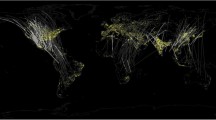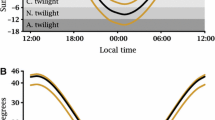Abstract
THAT light is a factor of prime importance in the inauguration or stimulation of bird migration, has been suggested by many authors from the days of Seebohm onwards. While many of the suggestions will not bear close investigation, at least one very attractive view has been put forward by Sir E. Sharpey-Schafer. In an address delivered some years ago to the Scottish Natural History Society1 he makes the following comments, “the regularity with which migration occurs, indicates that the exciting cause must be regular. There is no yearly change, outside the equatorial zone, that occurs so regularly in point of time as the change in the duration of daylight. On this ground this may well be considered a determining factor in migration, and it has the advantage over other suggested factors that it applies to the northerly as well as to the southerly movement.” He says further “That it [migration] is a result of developmental changes in the sexual organs is improbable.”
Similar content being viewed by others
References
"On the Incidence of Daylight as a determining Factor in Bird Migration," E. A. Schäfer, NATURE, vol. 77, pp. 159–163 (December 19, 1907).
"Is Photoperiodism a Factor in the Migration of Birds?" G. Eifrig, Auk, vol. 41, pp. 439–444.
Author information
Authors and Affiliations
Rights and permissions
About this article
Cite this article
ROWAN, W. Relation of Light to Bird Migration and Developmental Changes. Nature 115, 494–495 (1925). https://doi.org/10.1038/115494b0
Issue Date:
DOI: https://doi.org/10.1038/115494b0
- Springer Nature Limited
This article is cited by
-
Variation in responses to photoperiods and temperatures in Japanese medaka from different latitudes
Zoological Letters (2023)
-
The effect of daylight exposure on the immune response and body condition of Great Tit nestlings
Journal of Ornithology (2023)
-
The art of growing old: environmental manipulation, physiological rhythms, and the advent of Microcebus murinus as a primate model of aging
History and Philosophy of the Life Sciences (2020)
-
Seasonal regulation of the lncRNA LDAIR modulates self-protective behaviours during the breeding season
Nature Ecology & Evolution (2019)
-
Avian ecological epigenetics: pitfalls and promises
Journal of Ornithology (2019)





